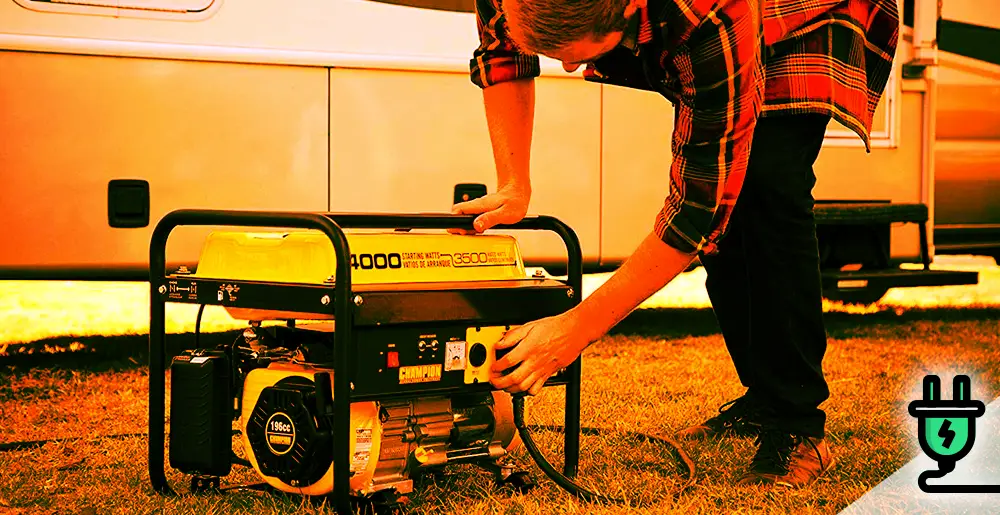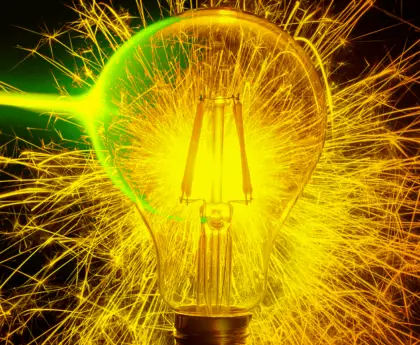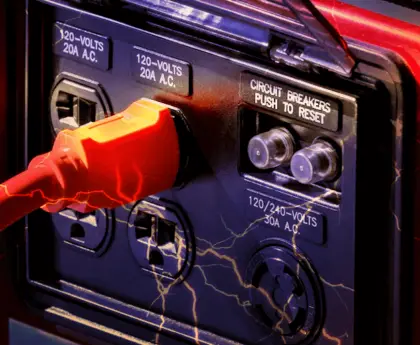There’s nothing worse than losing power during an emergency.
The lights go out. The refrigerator shuts down. Your stove and microwave quit. Sometimes our heat and cooling systems go out, too.
If you’ve ever been in a blackout situation before you know exactly how vulnerable your home becomes when the electricity is switched off. This already frustrating situation is only compounded even more by the fact that there’s no telling when the powers going to come back on.
Thankfully though, with the help of a portable generator, you and your family won’t have to worry about all the headache, hassle, and frustration a blackout brings to the table.
You’ll have lights. Your refrigerator will keep things cool. Your stove and microwave will let you prepare meals. And you won’t have to worry about your HVAC system “going dark”, either.
Before you spend any money on a quality portable generator, though, it’s important to understand how portable generators work.
If you’ve ever wondered how do portable generators work, this is the guide for you!
Breaking Down the Core Components of Portable Generators
Learning how do portable generators work really starts off with learning about the core components and how they work with one another.
Each of these core components play a big role in the performance of portable generators. Working in concert with one another they are able to turn your fuel source (gasoline or diesel fuel most of the time) into usable electricity.
The Heartbeat – The Internal Combustion Engine
The heartbeat of every single portable generator is the Internal Combustion Engine (ICE).
Similar to the small engine found in snowblowers, lawnmowers, and other pieces of yard equipment, most portable generators have engines that are a little bigger – and many of them run off of diesel fuel.
At the end of the day, though, the ICE in a portable generator is responsible for turning fuel into mechanical energy. And that’s the “secret sauce” behind how your generator produces usable electricity.
The Powerplant – The Alternator
When you turn on your portable generator you are firing up the ICE so that it activates the alternator.
The alternator is the powerplant of the system. It’s the system that converts the mechanical energy of the ICE into electricity using a rotating component (sometimes called a rotator). This rotating component creates a magnetic field as it spins around a bundle of wound metallic coils.
This actually produces the electrons that are later converted into usable energy through the outlets on board.
The Jumpstart – The Starter
The starter mechanism is the switch that flips your ICE into action. It’s the same kind of mechanism you’ll find in your car – a tiny little engine that gets everything rocking and rolling.
Sometimes the starter can be triggered with an electric key just like right along mowers and automobiles. Other times, though, you have to pull on a cord to crank the starter yourself and your ICE into high gear.
The Juice – The Fuel System
As highlighted above, most portable generators are going to be fueled by either gasoline or diesel liquid fuels.
Some options, though, run off of propane. These are becoming more and more popular, especially with folks that want to be able to use the same propane tanks they have for their grills or other outdoor appliances with a generator in an emergency.
It’s also a lot easier (and a lot safer) to store larger amounts of propane to run your generator than it is to store gallons and gallons of gasoline or diesel fuel.
No matter what, though, your generator isn’t going to run if you don’t have fuel available and on hand.
Make sure that you have plenty stockpiled, especially if you know bad weather is around the corner.
The Distribution Center – The Outlets
A lot of people wonder how do portable generators work when it comes to getting the electricity out of the generator itself and into your appliances in the home.
Well, this is all possible through the outlets system built on board every single portable generator.
These outlets look just like the outlets that you have in your walls. They allow you to plug different appliances directly into your portable generator, but you can also rig the system so that your generator powers your entire home electrical grid, too.
Obviously, you’ll need a pretty hefty portable generator if it’s going to run all of your core appliances, your lights, and your HVAC system – especially all at the same time.
Some people use portable generators as “backup systems” tied into specific circuits in their home. This allows them to run core appliances and climate control elements (or security systems) off of the portable generator while leaving the rest of the home dark.
The size of the generator, the amount of power it generates, and it’s fuel capacity will have a major impact on how many outlets it has. It’ll also have an impact on the type of electricity it produces (120 V versus 240 V connections, for example)
The Power Generation Process Distilled
Now that we described the core components of a generator, it’s time to dig into how do portable generators work when you fire them up and plug something in.
First, you’ll need to fuel up your portable generator and then use the starter system to engage the Internal Combustion Engine.
That’s immediately going to cause the rotating component of the alternator to spend around the metallic coils inside of the generator itself. As things speed up, a magnetic field is created, and a surplus of electrons are generated.
As these electrons accumulate, they are attracted to a series of wires that pull the energy directly to the outlet system. As long as you have something hooked up to the outlets you’re going to be able to draw a steady flow of electrical current for as long as you have fuel to run the engine in this machine.
And that’s it!
That’s really all there is to it. It’s a simple, straightforward, and elegant process that provides on-demand power to anyone (anywhere) when they need it most.
Closing Thoughts
If you are a homeowner that has lived through an extended amount of time without power (especially if you have a family at home, too), the odds are pretty good you know exactly why portable generators are so important.
Keeping the fridge on, keeping major appliances on, and keeping the lights or the climate control system on during these kinds of emergencies can make a world of difference.
The trick is finding the right portable generator for your needs. With so many different great options out there on the market today finding the right one is easier than ever before – though you’ll need to do your research and due diligence for sure.
At least now (thanks to our detailed breakdown above) you won’t ever have to wonder how do portable generators work anymore.





